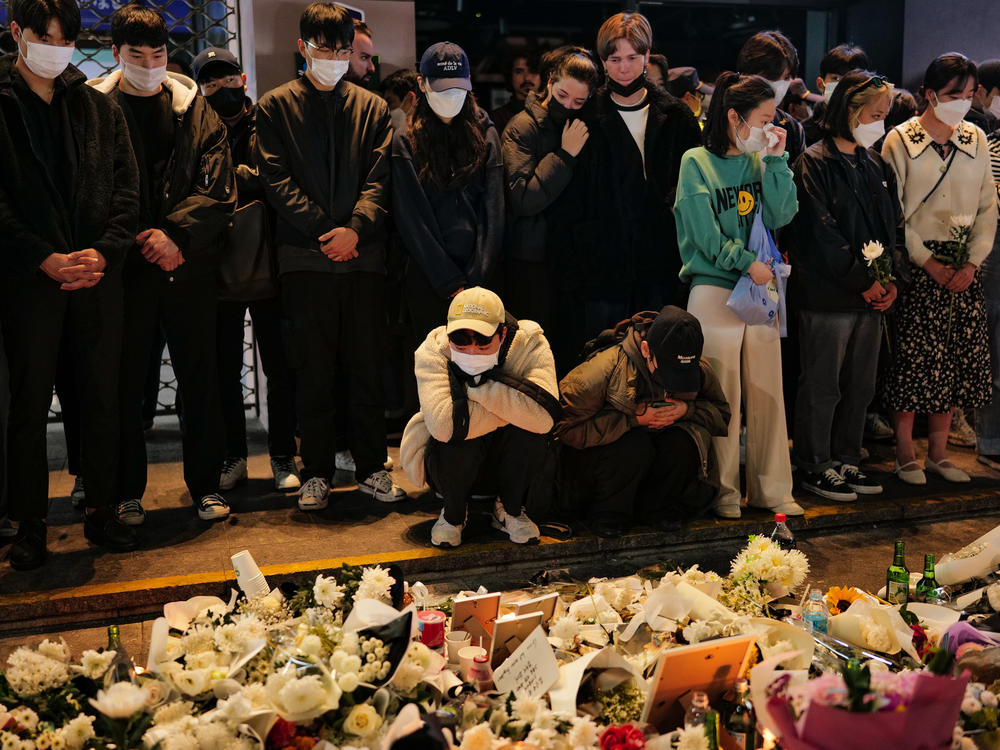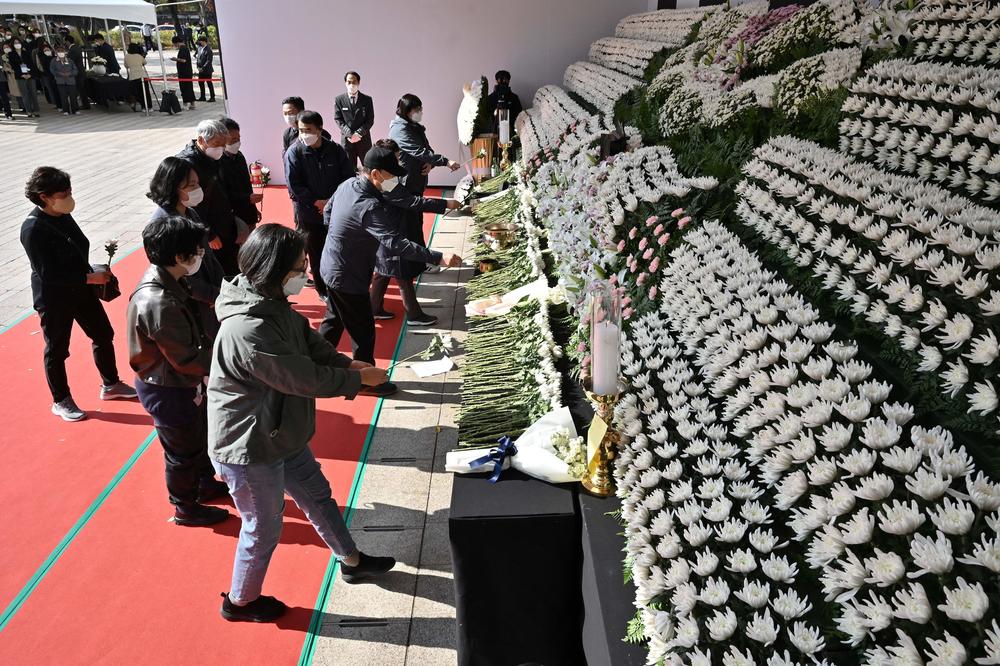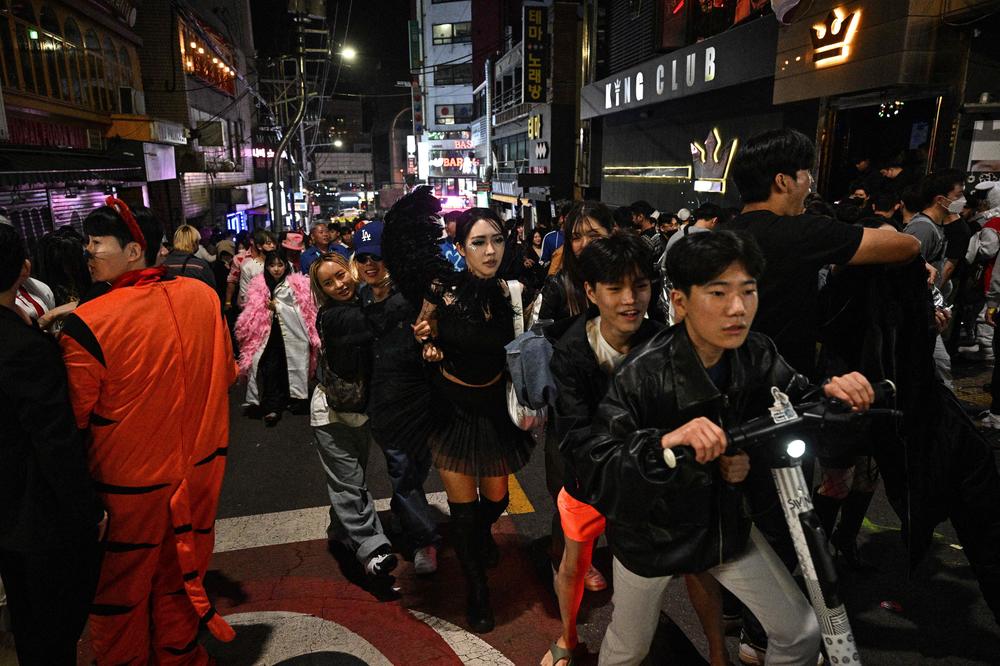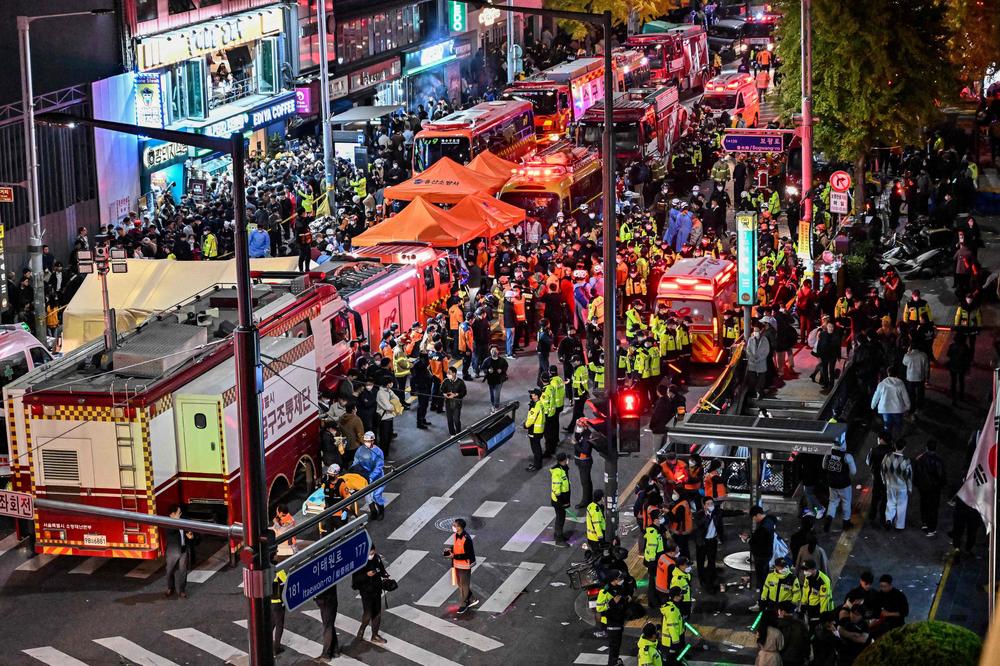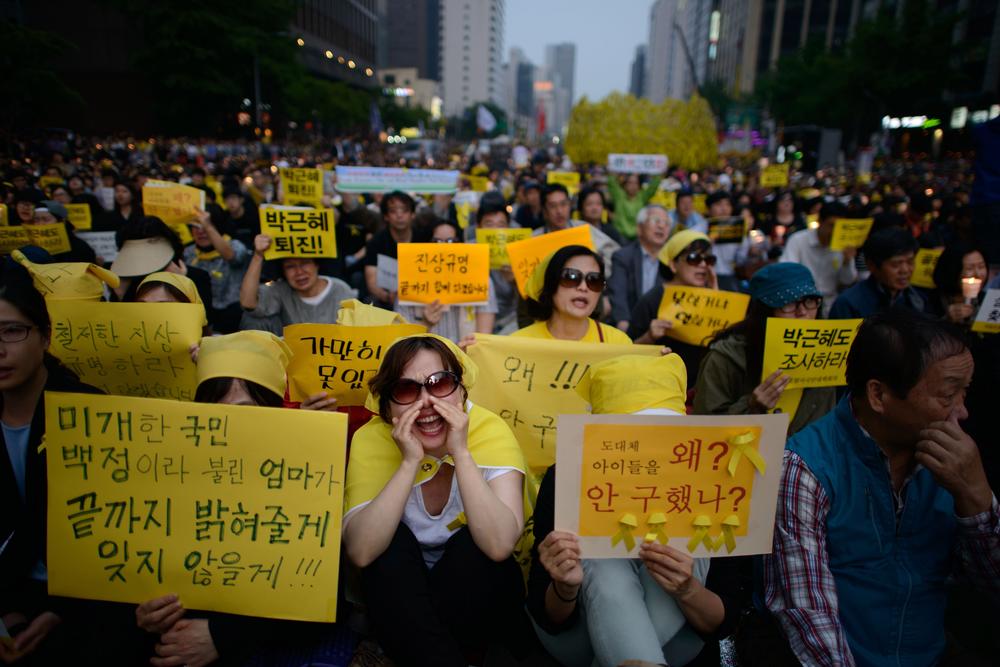Section Branding
Header Content
After Seoul's Halloween tragedy, South Koreans are searching for answers
Primary Content
SEOUL — Forty-eight hours after Saturday's deadly Halloween stampede, the country is mourning the victims and searching for answers.
A crowd surge in a narrow alley in the capital's Itaewon district killed more than 150 people and injured more than 140 on Saturday evening. The victims were mostly young adults, and among the dead are 26 foreigners from 14 countries.
President Yoon Suk Yeol on Sunday declared a weeklong national mourning period, the second in the country's history. National flags fly at half-staff, and many public events are canceled or delayed. The police launched a 475-strong investigation team and scoured the scene with forensics officers on Monday.
On Monday, local governments set up public mourning sites. Jeong Hye-yoon, 35, visited an altar near the scene. As a young woman living in a nearby neighborhood, she finds it "unbelievable and surreal" that a disaster of such magnitude happened in the heart of the city.
Witnesses are lamenting the lack of crowd control measures
"Large crowds gather in this area every year. But they were left on their own without any preparations to prevent a huge accident from happening," Jeong says.
The multicultural neighborhood of Itaewon has attracted hundreds of thousands of revelers looking for Halloween festivities each year. The police had estimated that over 100,000 people would visit the district this year as people celebrate the first Halloween free from pandemic-related restrictions. Over 130,000 passengers used the Itaewon subway station on Saturday, according to Seoul Metro Corp.
In videos filmed earlier that evening and posted on social media, the sloping 10-foot-wide alley is seen packed with people trying to move in both directions. The alley starts just steps away from a subway exit on the main street and connects to a narrower street lined with popular restaurants and clubs.
Many eyewitnesses lamented lack of crowd control measures. The National Police Agency on Monday said a total of 137 police officers were dispatched to the district on Saturday. And they were tasked with curbing crimes, not crowd control.
Hong Ki-hyun, chief of the agency's Public Order Management Bureau, admitted the police failure to predict mass casualties and expressed "regrets" about their judgment. He said the police do not have a manual for large gatherings that take place with no clear organizer.
Public safety experts emphasize that the gathering's spontaneous nature cannot be an excuse for inaction. Moon Hyeon-cheol of Soongsil University's Department of Police Science says the police and local authorities "could have blocked car traffic off the street near the site during this past weekend or had the subway pass Itaewon station without stopping."
Families of victims of a 2014 ferry disaster say this tragedy seems all too familiar
To one group of mourners who visited the Itaewon site on Monday, the massive loss of young lives and the failure to prevent it seem tragically familiar. They are the parents who lost their children in the 2014 Sewol ferry disaster.
The ferry sank and killed over 300 passengers, including 250 high school students, partly due to government failures and inappropriate safety measures.
Jeong Boo-ja, who lost her son in the ferry disaster eight years ago, says the parents "believed South Korea would have taken a lesson and not repeat the same" after their tragedy.
In the wake of the accident, the government restructured its disaster management system, strengthened safety regulations and increased related budgets. But according to Interior Ministry data from 2020, the number of disasters such as fires, chemical leaks and ship or train accidents has continued to grow — after a brief decline in 2015.
Jeong Boo-ja struggles to find words of condolence for the victims' families.
"There will be truly painful times ahead. I myself don't know how I passed the past eight years. And even though I share the same experience, I don't know how I can console the bereaved families," she says.
"I hope they stay strong and not be consumed by their own grief. I hope they can say sincere goodbyes to their son or daughter when they can. They will regret it if they don't."
Copyright 2022 NPR. To see more, visit https://www.npr.org.
